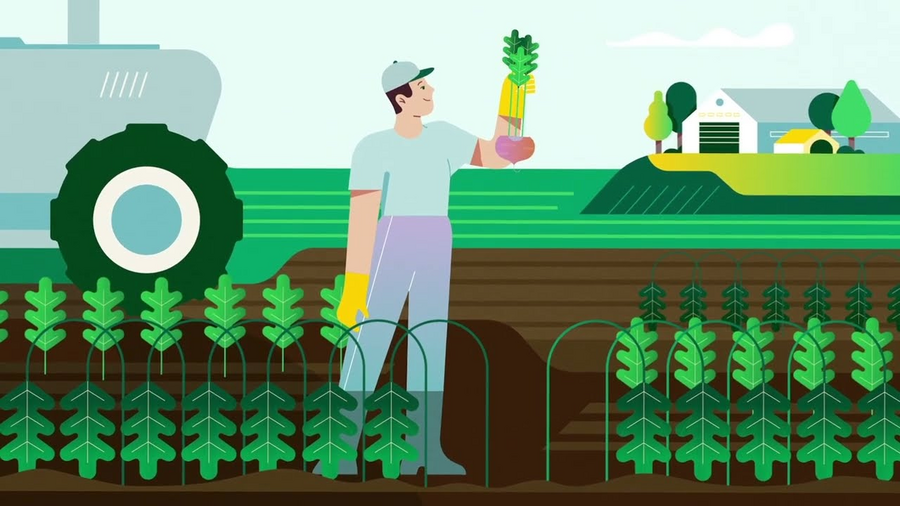The impact of Brown Spot, Stemphylium vesicarium, has led to considerable losses for pear growers in the main pear cultivation regions in Europe in recent years. This fungal infection causes dark spots on fruits and leaves, making affected pears unsuitable for the market.
This fungal infection takes place throughout the season and often becomes visible a few weeks before harvest. Brown spot survives on dead organic matter on the ground in pear orchards during winter. In Spring the fungi start to develop, creating spores that are dispersed by wind, infecting the crop.
As chemical solutions are less available and becoming less effective, Brown spot is a rapidly increasing problem. Over the last years several producers suffered losses of up to 60% of their harvest. Estimations show that on average 10% of the orchards in the Netherlands and Belgium are affected by Stemphylium vesicarium from time to time.
Trianum effective controlling Brown Spot
Koppert successfully expanded the label of the biofungicide Trianum-P to control Brown spot in pears in the Netherlands, Belgium and more recently, also in Spain. This development is a significant relief for pear growers in these countries who have been struggling with substantial losses caused by this harmful fungus. The endorsement by the authorities, marks a positive turn for growers.
Successful trials in pears
Trianum-P, based on the unique fungus Trichoderma harzianum T-22, has undergone extensive trials since 2015 to assess its effectiveness in reducing fruit losses in pear cultivation. ‘Independent research trials in both the Netherlands and Belgium, have shown it to reduce fruit losses in pears of up to 50%,’ says Koppert Product Manager, Guido Roozemond.
Trianum-P is based on the Trichoderma harzianum T22-strain. Research in Italy and Spain – where Brown Spot is a big problem - and later in the Netherlands and Belgium by Fruit Consult and CAF (Central Fruit Growers Advisory Body) among others, has shown that Trianum-P can be a part of the solution to control Brown spot.
The Netherlands and Belgium both have a maritime climate that is ideally suited for the cultivation of pears. Producers have welcomed the registration of an effective biological solution. ‘We involved ten pear producers from various parts of the Netherlands and Belgium in our trials, and they were suitably impressed by the effect Trianum-P has as a preventive and sustainable solution,’ Guido shares.
How Trianum-P works
Trianum-P is sprayed full field on the ground - both on the grass lane as well as on the vegetation-free strip. The spores then germinate and start to grow, competing with the Brown spot (Stemphylium vesicarium) fungus that is already present on the soil. The antagonistic characteristics of Trianum-P reduce the growth of the soil-borne Stemphylium, resulting in a lower number of infective ascospores, and hence less infection by Stemphylium.
‘Our experience over the last years has shown that it is important to take the moment of application into account. Trianum needs a soil temperature of 8-10 degrees and is best applied on moist soil. A second application can be done with a 30-40 days interval’.
‘Trianum definitely helps to control Brown spot and can be used within the Integrated Pest Management strategy of growers’ assures Guido.
